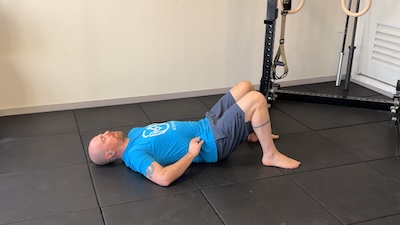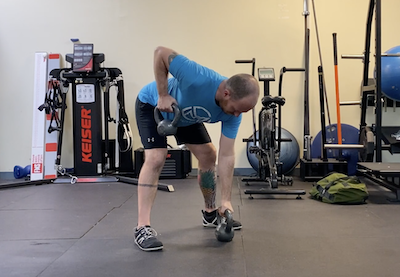Upper Body Rolling
Upper Body Rolling
Upper body rolling is a fundamental exercise designed to improve motor control, mobility, and core stability. This exercise involves rolling the body from a supine (lying on the back) to a prone (lying on the stomach) position, and back, using only the upper body, without the assistance of the lower body. The focus is on isolating upper body movement, which helps develop better coordination, balance, and movement efficiency.
Upper body rolling is particularly beneficial for athletes and individuals seeking to refine their movement patterns and enhance overall body awareness. It targets the muscles of the upper back, shoulders, and core, promoting a more integrated and functional use of the body. This exercise can also help identify and correct asymmetries or compensations in movement that might lead to injury or decreased performance.
Incorporating upper body rolling into a fitness routine can aid in the development of smooth and controlled movement patterns, which are essential for various sports and physical activities. The exercise encourages the activation of stabilizing muscles in the shoulders and core, enhancing overall strength and flexibility. It is especially useful as a warm-up exercise, as it helps to mobilize the spine and activate the upper body muscles, preparing them for more intense activity.
Upper body rolling can be performed at different levels of difficulty, making it suitable for all fitness levels. Beginners can start with simple movements and gradually progress to more challenging variations. By regularly practicing upper body rolling, individuals can improve their proprioception, enhance their functional movement capabilities, and build a strong foundation for more advanced exercises and athletic endeavors. This exercise is a valuable addition to any training regimen, promoting better posture, movement efficiency, and overall physical well-being.
Equipment Needed
Open floor or yoga mat.
Instructions:
From your back
- While lying face up reach both arms overhead
- Make your lower body as limp and loose as possible
- Lift your head and look in the direction you want to roll
- Lift one arm off the floor and reach across your body, keeping your eyes on your hand
- Use your core to lift your shoulder off the floor and rotate towards your hand, make sure to not push through your legs
- Continue to push your arm across your body making sure that you are looking at your moving hand
- Allow your passive legs to follow your torso as the roll continues
- Follow instructions for the opposite direction rolling
From your stomach
- While lying face down reach both arms overhead
- Make your lower body as limp and loose as possible
- Lift and rotate your head, looking over your shoulder in the direction you want to roll
- Lift the arm of the side you are rolling with and pull back the shoulder
- Keep your eyes on your moving and follow the arm with your neck, do not use your legs to push you into the roll
- As you continue into the roll allow your passive legs to follow your torso
- Follow instructions for the opposite direction rolling
Common ErrorS
Most people who haven’t practiced this have a difficult time keeping their lower body limp while rolling. If you feel like you are pushing with your lower body try one of the regressions.
Progressions / Regressions:
If this is too challenging:
- Try propping up your hip on a rolled towel, pad, or pillow. This will reduce the motion needed to start the roll
- Use a band attached to a door or rack to help pull you into he roll
If you want more of a challenge:
- N/A



